Learning From a Jar
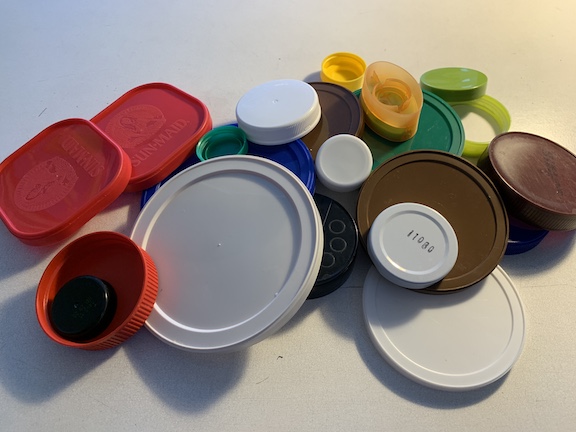
Dear parents, grandparents, and caregivers, are you, like me, … wondering if all those colorful plastic lids you throw out could have another life? … looking for another (easy, right at hand, safe*) way to engage your little ones? … wondering how you can help your child “discover math in everyday objects”?
(*Save the smallest lids for when your child is old enough not to chew or choke on them.)
Follow along here!
- Even better than collections of garden rocks, small kitchen objects, or a pile of washed socks … all those plastic lids you hesitate to toss will provide many hours (or years) of entertainment, conversation, language, math, and even artistic discoveries for your young ones.
- Just wash them and toss them into a box or bin.
- Then invite your child/children, join in the fun, or just prompt them with a question and watch them make their own discoveries while you go about your work.
Yes, I’ve been collecting jar lids for awhile … so start your collection now!
If you begin when your child is just starting to learn language, colors, counting (or even before), your child can learn more concepts and complexity as your collection grows. Of course, these concepts are grasped gradually, and usually in a sequence like the one below, so these activities can build over time. Be patient.
In any case, start with just a few lids, or a few colors, or a few sizes — 3 or 4 is a good number! (you can build up to 5, as in my photo below)
- “Let’s name the colors.” “How many do you see?” (touch and count)

- As your child develops language, you can foster a richer, growing vocabulary while playing with the lids! *light* / *dark* / *shiny* / *round* / *smaller* / *first, next, last* / etc.
- Before comparing or ranking sizes (which will come a little later), your little ones will enjoy choosing lids that are “little like me,” or “BIG like you,” or maybe “in the middle” (which you can call “medium”).
- With your child, start counting the objects by touching each one and saying its number in sequence as you do. Then explain that the last number tells how many are in the “whole group.” (Young children need lots of practice with this, with many different objects, over a period of time, before the association between number names and quantities of objects sinks in.)
- Even very young children (and some birds and mammals!) can recognize small quantities (of 2 to 5 objects) before they can name them! This is called “subetizing” and it’s a helpful skill. Try playing a game of “What’s missing?” or “How many?” with these few lids by having your child look away while you make one or more disappear.
- You might ask: “Can you ‘sort’ them by color?” and let them create groups, or lines of lids. Again, start with just 3 or 4 colors!
Now ask: Which color group is the biggest? or smallest? Or ask it this way, using words that compare quantity: Which color has the “most” lids? Which color has the “fewest” lids?
- At age 2 or 3 or 4, children can begin to notice and name shapes. Most lids are circles, but do you see any that are different? Help your child to find, and name, the shapes of the lids. Can you sort them by shape? You (or your child) might say: “I see a lot of circles, and 2 square lids, and 1 oval lid.”
- Is your child beginning to put things in order by size? Take out the lids, and ask them first to put them in groups of the same size (sorting by size). NOTE: A few lids will fall between the common sizes; you may need to help your child decide which main group those lids fit in best (small, medium, or large), or they may want to keep the odd ones separate. Then take one of each size, and ask them if they can line the lids up in order of size. Or maybe they will stack them. Did they place them smallest to largest? or largest to smallest?
Or maybe they noticed that the lids are different heights, and stacked them by height (which is also a measure of size)!
And then there’s this important challenge: “Tell me (or show me) how you put them in order (by size).” There are so many options.
Let them surprise you.
- With shapes and colors and sizes come a recognition of patterns! We can find visual patterns in windows, clothing and fabrics, fences, etc. But we can make patterns with lids (if you have enough). Select the lids that match (you’ll want 2 or 3 of each). Lay out 3 different lids in a row. Talk about what they look like: black, green, red. Can you find another “set” just like that and put it next to (or below) the first set?
START OF A PATTERN:
NOTE: Children begin sorting by noticing only one “attribute” (color OR size OR shape) and only gradually begin to describe — and later sort — them by more than one attribute at a time (“small black” or “large black,” or “green circle,” or “red square”).
EXTENDING THE PATTERN:
Finally, the question that I find the most fun, because there are so many ways to answer this. Lay out a few (4, 6 or 9) similar objects in a pattern and ask:
“What do you notice?” Wait for some answers before you ask anything more. They probably noticed something that you did not. And you can learn about their perceptions and thinking by just listening.
- “I noticed the black ones go little to big, and the green ones go bigger to little, and the red ones are all medium.”
- “I think the little green one belongs with the little black ones.”
- “I noticed there’s 3 black and 3 green and 3 red, so that is 9. And there’s 3 in the top row and 3 in the middle row and 3 in the bottom row, so that’s 9 too.”
This is a taste of the things you can do and learn with a simple collection of similar /dissimilar objects. But don’t stop here! Our many years of teaching and parenting have taught us that when we let children think, play, discover, and react in their own way, they will always surprise us with a new way of looking at something.
Of course, when you are done with all the counting and sorting (or when your collection of lids is growing too big), some of those lids can become a snowman, or the wheels (all the same size!) on a vehicle made from a shoe box, or the center of a flower with petals made from tissue paper or felt, or black and red discs for a game of tic-tac-toe!
If you would like some more ideas of how you can spark mathematical thinking with the children in your life, don’t stop here! … See the Math section in the chapter on Cognitive Competence in our book, Your Amazing Preschooler: How you can have the same capable, confident, and cooperative child at home that teachers have at school, by Deb Ellsworth and Tina Charney.

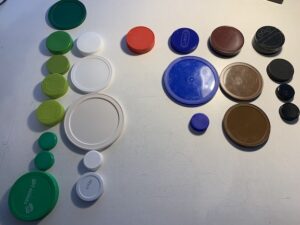
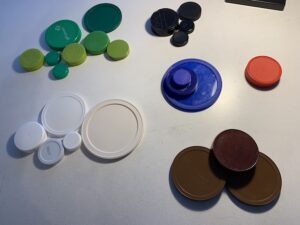

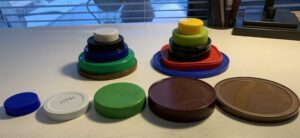

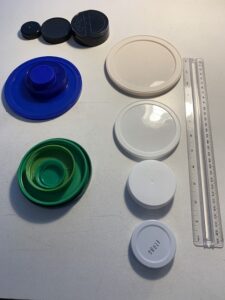


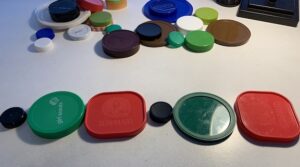
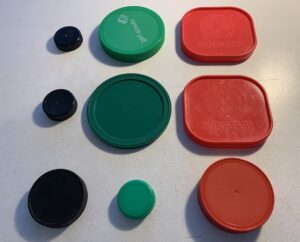
Love that idea!!
Really appreciate that Tina reminds us to wait for the answer from a child and not to jump in with your idea right away.
And also,it is so true that “you can learn about their perceptions and thinking by just listening”,
because
for sure, our amazing preschoolers are our amazing teachers.
Thank you Tina❤️